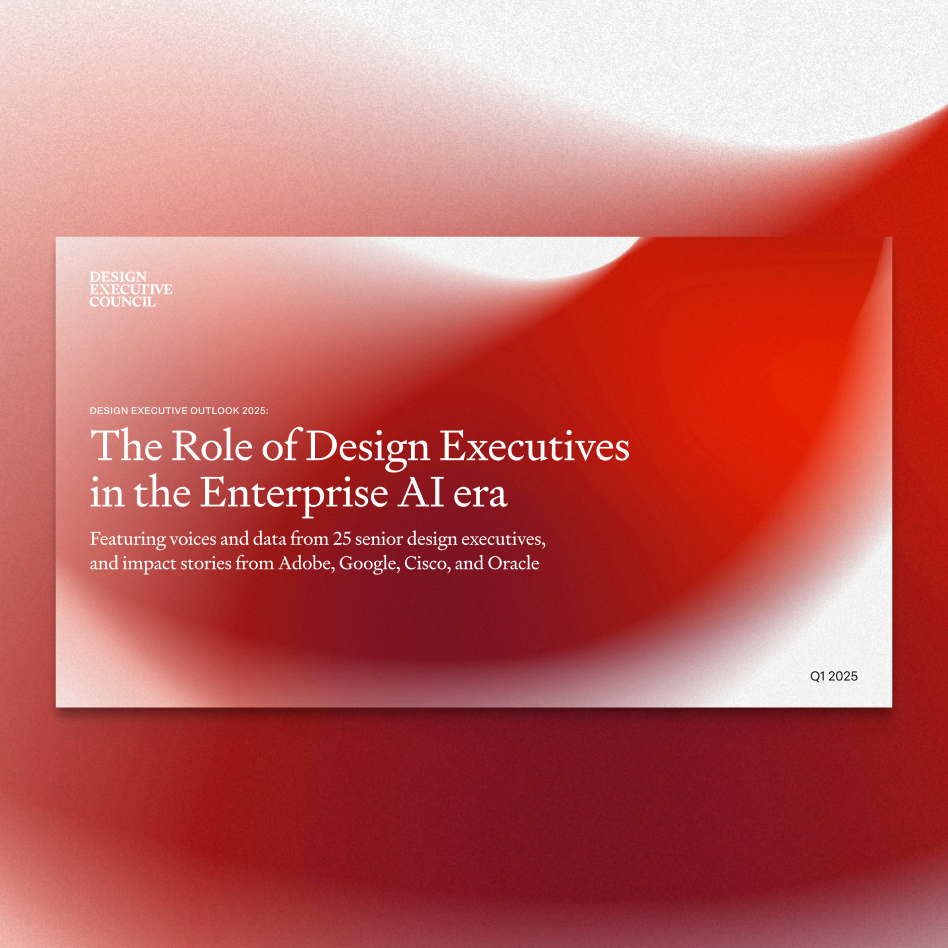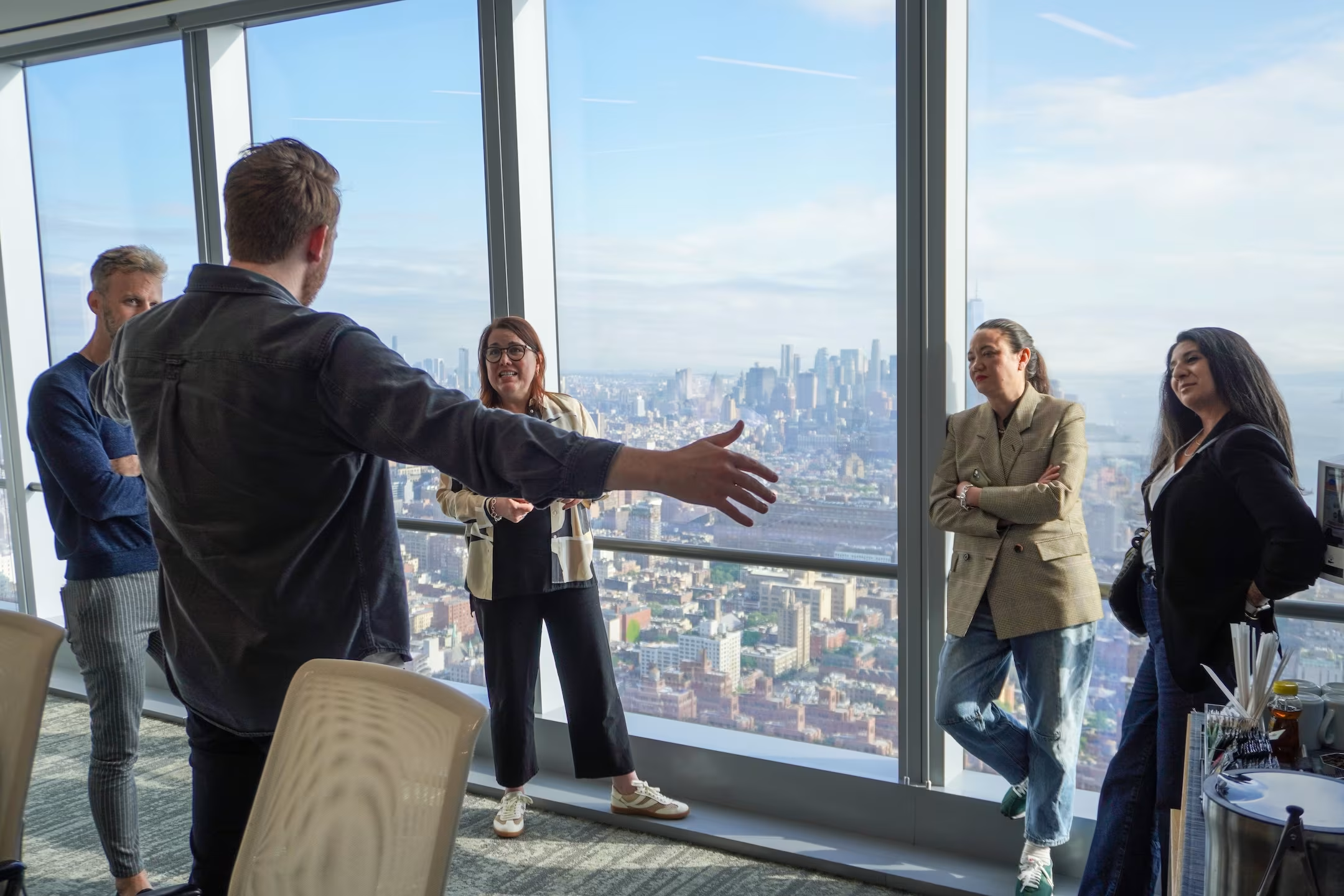Featuring:
Greg Petroff
Fmr. VP, Chief Design Officer
Cisco Secure
Situation: rising competition
In 2023, Cisco saw record revenue growth, reaching $57 billion, supported by strong demand for its networking and security solutions amid the pandemic-induced digital transformation wave.
However, Cisco faced increasing competition, especially from new entrants in cloud computing and software-defined networking (SDN). The rise of open-source technologies and greater virtualization also pressured Cisco’s traditional hardware-centric business model. As the market evolved, Cisco capitalized on the shift towards remote work and the growing use of IoT devices, positioning itself as a key player in networking infrastructure and cybersecurity.
In September 2022, Greg Petroff joined Cisco Secure, tasked with enhancing the competitiveness of Cisco's security products with design. Cisco needed to build a new product in the secure service edge market to stay competitive. With fierce competition, the team faced the challenge of developing a beta product within a stringent nine-month timeline while meeting high security standards.
Upon his arrival, Petroff was confronted with significant development challenges. He recounted, "I arrived at Cisco, and I was sitting with the engineering leader, and he said, ‘It's impossible to deliver the product in our time frame. We have 485 features, but only have team capacity for 200, and no clarity on priorities.'” Inspired by "Outcomes over Output" by Josh Seiden, Petroff emphasized a customer-first approach. He explained, "I used to carry copies of it in my backpack. People buy outcomes, not features. Prioritize what's important to them."
Solution: outcome-driven design
With one stakeholder on his side Greg seized the opportunity to follow this streamlined, outcome-based approach to transform not only an outdated product but to create an efficient design centered culture. The existing process Greg’s team worked in involved establishing milestone gates within the organization, including business commit, architecture commit, user experience commit, and engineering commit. While user experience and architecture commits were not always utilized, the business commit involved product proposals and feature sets essential for potential investment. However, there was significant work required between the business and engineering commits with a very tight timeline.
To address this, the approach was shifted towards an outcome-centric user experience commit and focusing on the deeper human understanding of how this product would be used in service to their customers; businesses. The focus was on identifying the top 20 customer outcomes the product needed to deliver and understanding how customers currently achieved them. Teams demonstrated workflows using tools like Figma, identifying areas for innovation and improvement along the customer journey before progressing to screen designs and prototypes.
Greg explained, “We built workflow diagrams in figma that helped us to understand how a customer is solving the problem today, either with us or with someone else's technology. And then we identified what are the opportunities where the engineering and product teams can innovate along those paths. We were always assessing whether we should just leave this alone and do it the same way as we have, or if there's an area that we need to innovate on. These conversations were happening before we got to any screens or mockups and prototypes.”
The design and product teams simultaneously stack ranked the 20 outcomes while gathering customer feedback and validating those results with the user research team. Greg challenged the research team to learn from customers, “What are the most important outcomes to you that this product can satisfy - not independent features. What does it allow you to accomplish as a business and for your people to successfully be at work and we narrowed that down to ten.”
Streamlining the approach, Greg’s team with their cross functional peers prioritized the least number of features necessary to satisfy the identified outcomes while considering engineering capacity constraints. This involved implementing simple solutions first, deferring more complex ideas for later iterations. With the market window closing, the focus was on delivering a compelling and useful product promptly to avoid losing relevance. This approach not only guided engineering teams in their tasks but also ensured efficiency in the product development process.
Simultaneously, a new design system, Magnetic, was being rolled out for the security products. Despite its early stage, Greg encouraged design teams to utilize it extensively, leveraging the completed components to expedite the design process. This decision facilitated rapid progress, allowing close alignment with engineering and maintaining a cadence of delivery without missing deadlines.“As we started we built a cadence where we were never more than three, three and a half weeks ahead of engineering. We never missed a deadline.”
Greg established two key rituals which helped cement a culture of design thinking within Cisco and complemented the shortened development time."To ensure efficient progress, we implemented twice-weekly design reviews utilizing Cisco's VidCast tool, enabling streamlined feedback loops and maintaining alignment with our design system. Once a month, we would do a version for stakeholders. If there was something really cool in one of those videos, I would send it out to senior leadership and say, 'Go check this out.'" The flexibility of the video format meant that Greg could share unique or outstanding work to the senior leadership team allowing them to be part of the process, but also at the same time, socializing the design review format and the outcome based process.
Despite occasional challenges, the team successfully adhered to this process, delivering a compelling product within nine months. While initial feedback suggested some desired features were missing, the focus on key outcomes ensured that the most critical functionalities were present, prioritized, and well-executed. This approach fostered trust with early customers, paving the way for iterative enhancements and continuous improvement, ensuring the product's ongoing relevance and evolution.
The new product called Cisco Secure Access was brought to market on time and has secured several hundreds of new customers and is doing very well in the early adoption phase. The product is meeting the sales goals and exceeding the market penetration and the customer acquisition goals that Cisco defined.
Reflection: clarity enables speed
Notably, this process created a very strong partnership between product design and engineering based on trust and shared goals. Greg clarifies, “If anything this effort showed that we can move faster together if we had a clear understanding of customer outcomes and benefits. Historically, our product team prioritized selling features over addressing customer needs comprehensively. This shift required discipline in prioritization, focusing on the most crucial customer requirements first. The team excelled collectively in this approach, resulting in a product that not only looks impressive but also offers straightforward functionality. I'm incredibly proud of their work."
During this project Greg’s teams worked on over 25 other products of similar size or shape, but as a new leader at Cisco this was a high profile piece of work and it was also the first project where Greg and his team were building with the Magnetic design system, and not renovating existing components. Throughout the process, Greg leaned heavily on his product development knowledge, a keen understanding of market behaviors and the SAAS industry, allowing him to empower and guide his team to make informed business decisions quickly and confidently never interrupting or overburdening the design process.
“I think design has a role to play in delineating what's possible. Product teams often describe a feature with words but the manifestation of that is something that design can often discern more quickly because, we make artifacts” Greg adds, “It’s in the making and the dialogue we have with the design that the answers can emerge with more clarity. Designers Make to think and often that is a distinct advantage in the early definition of a product.”
Reflecting on this project Greg shared the value of minimal viable product within design thinking process, “One of the things that design can do when it's doing its job right, and being a real partner with product is expressing the strategic experience and getting the outcome right along the way, with less pivots along the way”.








